Table of Contents
Guide
Page List

Copyright 2022 by Kaplan North America, LLC d/b/a Barrons Educational Series
All rights reserved under International and Pan-American Copyright Conventions. By payment of the required fees, you have been granted the non-exclusive, non-transferable right to access and read the text of this eBook on screen. No part of this text may be reproduced, transmitted, downloaded, decompiled, reverse engineered, or stored in or introduced into any information storage and retrieval system, in any form or by any means, whether electronic or mechanical, now known or hereinafter invented, without the express written permission of the publisher.
Published by Kaplan North America, LLC d/b/a Barrons Educational Series
1515 W Cypress Creek Road
Fort Lauderdale, FL 33309
www.barronseduc.com
ISBN: 978-1-5062-8014-1
10 9 8 7 6 5 4 3 2 1
Contents
Painless biology? Yes, thats right. Learning about and understanding biology does not have to be the intimidating process that so many students expect it to be. Think about it: biology is the study of lifeisnt that what youve been doing for most of your life? Ive been teaching high school biology for 25 years, and so many students arrive in my classroom afraid of the subject and sure that biology is beyond comprehension. It is not. Think about what you already know about how life works. Youre off to a good start, right? There is definitely science to explore and there is a language that belongs to biology, but always keep in mind that when you do the work to explore, understand, and define life, you are working to increase your understanding of yourself and of the world around you. Its totally worth it! Lets go
Painless Icons and Features
Painless Biology incorporates the following icons and features to help make learning biology easier.
 PAINLESS FACT
PAINLESS FACT
Interesting documented biological facts about the topics are covered in each chapter. Each Painless Fact helps to illuminate and personalize the information presented in that chapter.
 PAINLESS TIP
PAINLESS TIP
You will find a variety of helpful hints and suggestions that are specific to understanding biology throughout the chapters of this book
 PAINLESS STUDY TIP
PAINLESS STUDY TIP
Throughout these chapters you will find study skill strategies specific to learning about and exploring biology and the sciences.
 PAINLESS STEPS
PAINLESS STEPS
When the exploration of a topic is sequential or would benefit from a list of steps, the steps are provided under this feature.
 REMINDER
REMINDER
Many topics in this book are presented and then revisited and elaborated upon, or explored in a different context, in later chapters. It may help to go back and review the original information as you begin to apply it to a new biology concept.
 CAUTIONMajor Mistake Territory!
CAUTIONMajor Mistake Territory!
These warnings may help you avoid common mistakes and misunderstandings. Make sure to read them carefully.
 BRAIN TICKLERS
BRAIN TICKLERS
You will find Brain Ticklers throughout and at the end of each chapter of Painless Biology. These short quizzes are designed to make sure that you understand and recall the information you just learned. Complete the Brain Ticklers and check your answers using the answer key at the end of the chapter. If you get any wrong, you know that thats a topic that needs to be reviewed.
 SUPER BRAIN TICKLERS
SUPER BRAIN TICKLERS
Super Brain Ticklers appear at the end of each chapter. These are comprehensive quizzes on all of the topics covered in the chapter. Solve these questions to make sure that you understand all of the chapter topics before moving forward.
Chapter Breakdown
is an introduction to science and biology. Given that biology is the study of life, this chapter defines the characteristics shared by all living things. It also discusses one of the most important instruments used to study biologythe microscope.
explores the study of cells. In this chapter you will investigate how organisms are categorized and named. You will explore some of the diversity of life forms. You will examine the structures, called organelles, that make up all living things. You will also discover some of the impacts of cells and organelles that do not work correctly.
is about biological chemistry and explores atoms, molecules, and chemical bonding. The importance of water, along with the associated role of pH in living things, is discussed. This chapter explains the biological macromolecules: carbohydrates, lipids, proteins, and nucleic acids. It also explores some important specialized biological molecules like ATP and enzymes.
explores how materials are transported into and out of cells. Cell membrane structure is discussed as well as its impact on transport. Passive and active transport are reviewed including osmosis and osmotic solutions. Finally, this chapter discusses what happens when cell membranes dont work correctly.
looks into the relationship between metabolism and energy. Photosynthesis, chemosynthesis, and cellular respiration and their cycles are explained. Energy-storing macromolecules like ATP are discussed.
is about human anatomy and includes explanations of basic anatomy and physiology, planes and directional terms, body cavities and membranes, and microanatomy and macroanatomy. This chapter explores the basic functions, microscopic and gross anatomy, and diseases of each of the human body systems. All body systems are reviewed: skeletal, muscular, integumentary, cardiovascular, respiratory, digestive, urinary, nervous, endocrine, immune, lymphatic, and reproductive.
explores cellular reproduction, focusing on the roles of asexual and sexual reproduction. The cell cycle is explained with a focus on mitosis and meiosis. Aging and cellular life spans are discussed in the context of the activity of telomeres.
is a chapter on the basics of genetics. Here, you will explore what genetics is, what it does, and how it impacts each of us. This chapter explores traits, DNA, chromosomes, genes, and alleles.
examines basic Mendelian inheritance and its patterns. You will explore a bit of the life and works of the Father of Modern Genetics, Gregor Mendel. You will explore simple Mendelian inheritance patterns: recognizing dominant and recessive genes as well as homozygous and heterozygous inheritance. You will learn about and practice with basic Punnett squares. You will also learn about non-Mendelian, or complex, patterns of inheritance.
is about molecular genetics. You will explore the history of the study of genetics. This chapter will explain nucleic acids, DNA, and RNA. You will learn about how DNA replication, transcription, and translation work.



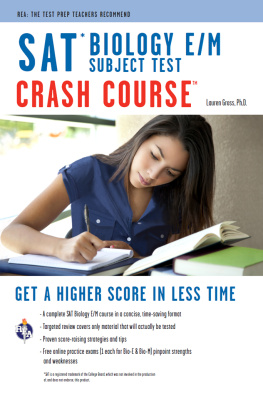
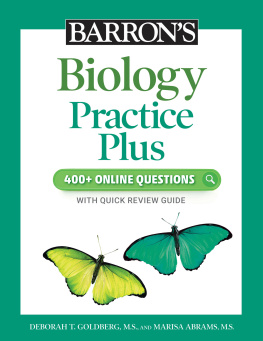
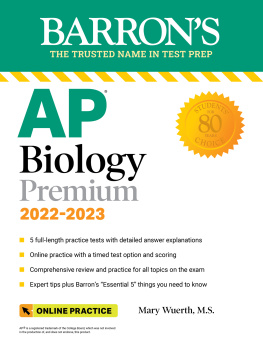
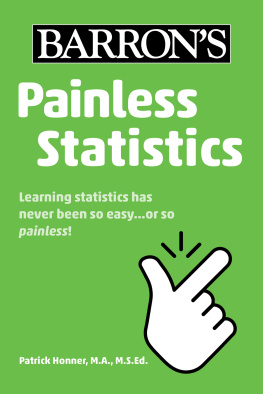
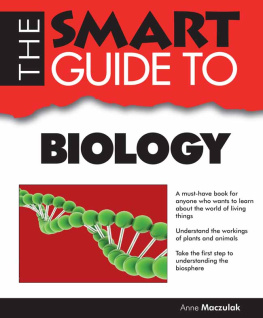

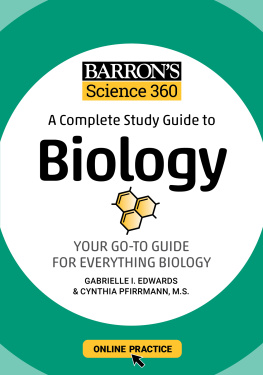
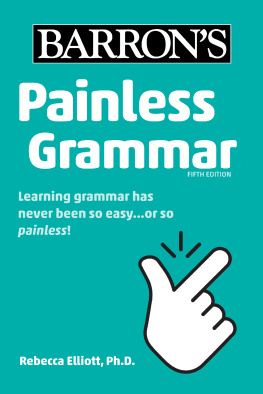


 PAINLESS FACT
PAINLESS FACT REMINDER
REMINDER CAUTIONMajor Mistake Territory!
CAUTIONMajor Mistake Territory! BRAIN TICKLERS
BRAIN TICKLERS SUPER BRAIN TICKLERS
SUPER BRAIN TICKLERS